- Home
- Peter Ackroyd
London: The Biography
London: The Biography Read online
London: The Biography
Peter Ackroyd
Peter Ackroyd
London: The Biography
List of Illustrations
BLACK-AND-WHITE INSERT I
Early Londoner admiring London Stone (Guildhall Library, Corporation of London) John Stow (Guildhall Library, Corporation of London)
Charter of William I (Corporation of London Records Office)
Marcellus Laroon, Street merchants
Aerial sketch of London, 1560 (Guildhall Library, Corporation of London) View of London Bridge by Anthonis van den Wyngaerde (Ashmolean Museum, Oxford) Panorama of London by Hollar (Guildhall Library, Corporation of London) View of Old St. Paul’s by Hollar (Guildhall Library/Corporation of London, UK/Bridgeman Art Library) The Royal Exchange by Hollar (Courtesy of the Museum of London)
Detail of map charting the Great Fire of London, 1666 (Royal Academy of Arts Library, London, UK/Bridgeman Art Library) 17th c. firemen (Royal Academy of Arts Library, London, UK/Bridgeman Art Library) Hanging outside of Newgate Prison by Rowlandson (Courtesy of the Museum of London) Moll Cut-Purse (Courtesy of the Museum of London)
Newgate Prison (Courtesy of the Museum of London)
National Temperance map of London (Courtesy of the Museum of London)
Café Monico, Piccadilly Circus (Courtesy of the Museum of London)
COLOR INSERT I
London from Southwark, Dutch School, c.1630 (Courtesy of the Museum of London) Entrance to the River Fleet, Samuel Scott (Guildhall Art Gallery, Corporation of London) Detail of the City from Braun and Hogenberg’s map of London, 1572 (Guildhall Library, Corporation of London, UK/Bridgeman Art Library) Johann B. Homann’s map and prospect of London, 1730 (British Library, London, UK/Bridgeman Art Library) The Great Fire of London, 1666 aquatint after Philippe de Loutherbourg (Guildhall Library, Corporation of London, UK/Bridgeman Art Library) The Burning of the Houses of Parliament, 16th October 1834, J.M.W. Turner (Philadelphia Museum of Art, Philadelphia, PA, USA/Bridgeman Art Library) Jack Sheppard, William Thornhill (Courtesy of the Museum of London) Tom, Jerry and Logic Visiting Condemned Prisoners of Newgate Prison, George and Isaac Cruikshank (Guildhall Library, Corporation of London, UK/Bridgeman Art Library) The Curds and Whey Seller, Cheapside, c. 1730, British School (Courtesy of the Museum of London) The Meat Stall from The London Markets, engraved by M. Dubourg after James Pollard (Guildhall Library, Corporation of London, UK/Bridgeman Art Library) Smithfield Market, engraved by R.G. Reeve after James Pollard (British Museum, London, UK/Bridgeman Art Library) The Frozen Thames, c.1677, Abraham Hondius (Courtesy of the Museum of London) Punch or May Day, Benjamin Haydon (Tate Gallery, London/Art Resource, NY) A Rake’s Progress IV: The Arrested, Going to Court, William Hogarth (Courtesy of the Trustees of Sir John Soane’s Museum, London/Bridgeman Art Library) The Four Times of Day: Morning, William Hogarth (Upton House, Oxfordshire, UK/Bridgeman Art Library) Whitehall and the Privy Gardens from Richmond House, Canaletto (By courtesy of the Trustees of the Goodwood Collection) View of the Adelphi from the River Thames, William Marlow (Christie’s Images, London, UK/Bridgeman Art Library)
COLOR INSERT II
The Laying of the Water Main in Tottenham Court Road, George Scharf (British Museum, London, UK/Bridgeman Art Library) The Scavenger’s Lamentation, engraved by A. Sharpshooter (Guildhall Library, Corporation of London) The Enraged Musician, William Hogarth (Ashmolean Museum, Oxford, UK/Bridgeman Art Library) The Railway Station, William Frith (Royal Holloway and Bedford New College, Surrey, UK/Bridgeman Art Gallery) The Crowd, Robert Buss (Guildhall Art Gallery, Corporation of London) Piccadilly Circus, Charles Ginner (Tate Gallery, London/Art Resource, NY) Hammersmith Bridge on Boat Race Day, Walter Greaves (Tate Gallery, London/Art Resource, NY) Noctes Ambrosianae, Walter Sickert (Castle Museum and Art Gallery, Nottingham, UK/Bridgeman Art Library/© 2001 Artists Rights Society [ARS], New York, NY/DACS, London) Hammersmith Palais de Danse, Malcolm Drummond (Plymouth City Museum and Art Gallery) A Coffee Stall, Chas Hunt (Courtesy of the Museum of London)
The Coffee House, William Ratcliffe (Southampton City Art Gallery, Hampshire, UK/Bridgeman Art Library) Allen’s Tobacconist Shop, Hart Street, Grosvenor Square, Robert Allen (Courtesy of the Museum of London) House, Rachel Whiteread (Anthony d’Offay Gallery)
Two Sleepers, Henry Moore (The Henry Moore Foundation/Walter Hussey Bequest, Pallant House, Chichester, UK/Bridgeman Art Library) Devastation, 1941: An East End Street, Graham Sutherland (Tate Gallery, London/Art Resource, NY) Canary Wharf, Isle of Dogs, 1991, Alan Delaney (Courtesy of the Museum of London)
BLACK-AND-WHITE INSERT II
Regent Street in 1886, London Stereoscopic Company (Courtesy of the Museum of London) Covent Garden Porters, John Thomson (Courtesy of the Museum of London) Old houses in Bermondsey
Clerkenwell Green
River scavengers
Women sifting through dust mounds
The Great Wheel, Earl’s Court Exhibition, 1890, Charles Wilson (Courtesy of the Museum of London) Children Following a Water Cart, William Whiffin (Tower Hamlets Local History Library) Boy selling matches
Children Playing Cricket in Alpha Road, Millwall, 1938, Fox Photos (Hulton/Archive) A Thoroughbred November and London Particular, engraved by George Hunt after M. Egerton (Guildhall Library/Corporation of London) Car in smog, Henry Grant (Courtesy of the Museum of London)
A Paraleytic Woman, Géricault (Bibliothèque Nationale de France, Paris) Protein Man (Davidson/Evening Standard/Hulton/Archive)
Bomb damage in Paternoster Row, 1940 (Cecil Beaton photograph, courtesy of Sotheby’s London) Near Spitalfields Market (© Don McCullin/Contact Press)
PART OPENERS
Plan of remains of Roman ship (Courtesy of the Museum of London)
Matthew Paris map of London, 1252 (By permission of the British Library [ROY.14.C.VII f2]) Dore, Ludgate Hill
Tudor depiction of the market at Eastcheap (By permission of the Folger Shakespeare Library) Mid-16th c. map of Moorfields (Courtesy of the Museum of London)
Marcellus Laroon, The Merry Milkmaid
The Rookery of St. Giles (Courtesy of the Museum of London)
Punch and Judy puppet show (Courtesy of the Museum of London)
Great Plague of 1665 (Pepys Library, Magdalene College, Cambridge) Christopher Wren and John Evelyn plan of London after the Great Fire, 1666 (Courtesy of the Museum of London) Rowlandson depiction of hanging (Courtesy of the Museum of London)
Rowlandson, Revellers at Vauxhall (Courtesy of the Museum of London) Gillray caricature of Sheridan as Punch (Guildhall Library, Corporation of London) Cockney flower seller in Covent Garden (Courtesy of the Museum of London) Dore, vagrants huddled on Westminster Bridge
The Sessions House on Clerkenwell Green (Guildhall Library, Corporation of London) The burning of Newgate Prison, 1780, Gordon Riots (Guildhall Library, Corporation of London) Title page of Astrologaster of the Figure Caster by John Melton Scharf, the building of Carlton House Terrace, c. 1830
Girgnion engraving of the Fleet River (Guildhall Library, Corporation of London) Mayhew, The Sewer Hunter (Courtesy of the Museum of London)
Dore, Seven Dials Slum
Géricault, Pity the Sorrow of a Poor Old Man (Bibliothèque Nationale de France, Paris) The Mud-lark (Courtesy of the Museum of London)
Scharf, The Original Oyster Shop
Whistler, Billingsgate (Courtesy of the Museum of London)
Hogarth, A Harlot’s Progress
London Underground poster, 1929
St. Paul’s Cathedral (Imperial War Museum, London)
Poster for the Lansbury Council Estate in Poplar (Courtesy of the Museum of London) Tribute to Christopher Wren (Guildhall Library, Corporation of London)
Chronology
BC
54 Caesar’s first expedition to Britain AD
41 The Roman invasion of Britain
43 The naming of Londinium
60 The burning of London by Boudicca
61-122 The rebuilding of London
120 The Hadrianic fire of London c.
c. 190 The building of the great wall 407 The Roman withdrawal from London
457 Britons flee London to evade the Saxons 490 Saxon domination over London
587 Augustine’s mission to London
604 Foundation of a bishopric, and St. Paul’s, in London 672 Reference to “the port of London.” The growth of Lundenwic 851 London stormed by Vikings
886 Alfred retakes and rebuilds London
892 Londoners repel Danish invasion fleet 959 A great fire in London: St. Paul’s burned 994 Siege of London by Danish forces 1013 The second siege of London, by conquering Sweyn 1016 Third siege of London by Cnut, repulsed 1035 Harold I elected king by Londoners 1050 The rebuilding of Westminster Abbey 1065 Dedication of Westminster Abbey
1066 The taking of London by William the Conqueror 1078 The building of the White Tower
1123 Rahere establishes St. Bartholomew’s 1176 The building of a stone bridge
1191 The establishment of a London commune 1193-1212 The first mayor of London, Henry Fitz-Ailwin 1220 Rebuilding of Westminster Abbey
1290 Expulsion of the Jews; Eleanor Crosses set up at Chepe and Charing Cross 1326 The London revolution: deposition of Edward II 1348 The Black Death kills one-third of London’s population 1371 Charterhouse founded
1373 Chaucer living above Aldgate
1381 Wat Tyler’s revolt
1397 Richard Whittington first elected mayor 1406 Plague in London
1414 The Lollard revolt
1442 The Strand is paved
1450 Jack Cade’s revolt
1476 The establishment of Caxton’s printing press 1484 The sweating sickness in London
1485 Henry VII enters London in triumph after the Battle of Bosworth 1509 Henry VIII ascends the throne
1535 Execution of Thomas More on Tower Hill 1535-9 The spoilation of London’s monasteries and churches 1544 Wyngaerde’s great panorama of London 1576 The building of the Theatre in Shoreditch 1598 Publication of Stow’s Survey of London
1608-13 The construction of the New River 1619-22 The building of Inigo Jones’s Banqueting House 1642-3 The construction of earthen walls, and forts, against the king’s army 1649 Execution of Charles I
1652 The emergence of the coffee house 1663 The building of a theatre in Drury Lane 1665 The Great Plague
1666 The Great Fire
1694 The foundation of the Bank of England 1733 The covering of the Fleet River
1750 The building of Westminster Bridge 1756 The construction of the New Road
1769 The building of Blackfriars Bridge 1769-70 Wilkite agitation in London
1774 The London Building Act
1780 The Gordon Riots
1799 The establishment of the West India Dock Company 1800 The foundation of the Royal College of Surgeons 1801 London’s population reaches one million 1809 Gas-lighting instituted in Pall Mall 1816 Radicals meet at Spa Fields: riots in Spitalfields 1824 National Gallery founded
1825 Nash rebuilds Buckingham Palace
1829 London Metropolitan Police Force founded 1834 Houses of Parliament destroyed by fire 1836 University of London established
1851 The Great Exhibition opened in Hyde Park 1858 The “great stink” leads to Bazalgette’s sanitary engineering 1863 The opening of the world’s first underground railway 1878 The advent of electric lighting
1882 The emergence of the electric tram-car 1887 “Bloody Sunday” demonstrations in Trafalgar Square 1888 The appearance of Jack the Ripper in Whitechapel 1889 The establishment of the London County Council 1892 The beginning of the Blackwall Tunnel under the Thames 1897 The emergence of the motor-omnibus 1901 Population of London reaches 6.6 million 1905 Epidemic of typhus. Aldwych and Kingsway opened to traffic 1906 Suffragettes demonstrate in Parliament Square 1909 The opening of Selfridge’s department store 1911 The siege of Sidney Street
1913 The inauguration of the Chelsea Flower Show 1915 The first bombs fall on London 1926 The General Strike
1932 The building of Broadcasting House in Portland Place for the BBC
1935 The inauguration of the Green Belt 1936 The battle of Cable Street
1940 The beginning of the London Blitz
1951 The Festival of Britain on the South Bank 1952 The great smog
1955 The opening of Heathrow Airport
1965 The abolition of the London County Council; creation of the Greater London Council 1967 The closure of the East India Dock; the building of Centre Point 1981 The Brixton riots; the establishment of the London Docklands Development Corporation 1985 Broadwater Farm riots
1986 Completion of M25 ringway; abolition of GLC; the “big bang” in the Stock Exchange 1987 The building of Canary Wharf
2000 Mayoral elections
Acknowledgements
The author and publisher are grateful to the following for permission to reproduce illustrative material which appears in the text pages: Bibliothèque Nationale, Paris, 587; British Library, 43; Folger Shakespeare Library, Washington, D.C., 81; Guildhall, 383, 455, 471, 529, 751; Imperial War Museum, 721; Magdalene College, Cambridge, 191; Museum of London, 5, 89, 121, 135, 219, 237, 297, 403, 551, 613, 661, 735.
The author and publisher are grateful to the following for permission to reproduce copyright material: Italo Calvino, Invisible Cities (Secker amp; Warburg and the Wylie Agency (UK) Ltd.); Sally Holloway, Courage High (HMSO); Mike and Trevor Phillips, Windrush: the Irresistible Rise of Multi-Racial Britain (HarperCollins); Virginia Woolf, The Diaries, ed. Anne Oliver Bell (the Executors of the Estate of Virginia Woolf, The Hogarth Press and Harcourt Brace).
The jacket and endpapers show details from the following paintings and photographs:
Front cover: London from Southwark, c.1630, British School; The Great Wheel, Earl’s Court Exhibition, 1890, by Charles Wilson; Curds and Whey Seller, Cheapside, c.1730, British School; Coombe and Co’s Brewer’s, St. Giles, c.1875, by Alfred and John Bool © Museum of London; Canary Wharf from the Isle of Dogs; Thames Barrier © Matthew Weinreb; inside flap: The Crawlers, c.1876, by John Thomson © Museum of London; Lloyds of London © Matthew Weinreb; back cover: May Morning, c.1760, by John Collet; Allen’s Tobacconist Shop, c.1841, by Robert Allen; A Shop in Macclesfield Street, Soho, 1883, by Henry Dixon; Suffragette Demonstration in Trafalgar Square, c.1908, © Museum of London; Simpson’s of Piccadilly; John Lewis, Oxford Street © Matthew Weinreb; inside flap: Westminster Bridge from the River Looking South, c.1750, British School; Railway Maintenance Gang, St. Pancras, c.1900, by Rev. John Galt © Museum of London; spine: Regent Street, c.1886, anon. © Museum of London; endpapers: Seven Phases in the Evolution of Old London Bridge © Museum of London.
Cartography on pages xxvi-xxix by Pamela Talese.
While the publishers have made every effort to trace the owners of copyright, they will be happy to rectify any errors or omissions in further editions.
The City as Body
T he image of London as a human body is striking and singular; we may trace it from the pictorial emblems of the City of God, the mystical body in which Jesus Christ represents its head and the citizens its other members. London has also been envisaged in the form of a young man with his arms outstretched in a gesture of liberation; the figure is taken from a Roman bronze but it embodies the energy and exultation of a city continually expanding in great waves of progress and of confidence. Here might be found the “heart of London beating warm.”
The byways of the city resemble thin veins and its parks are like lungs. In the mist and rain of an urban autumn, the shining stones and cobbles of the older thoroughfares look as if they are bleeding. When William Harvey, practising as a surgeon in St. Bartholomew’s Hospital, walked through
the streets he noticed that the hoses of the fire engines spouted water like blood from a cut artery. Metaphorical images of the Cockney body have circulated for many hundreds of years: “gob” was first recorded in 1550, “paws” in 1590, “mug” in 1708 and “kisser” in the mid-eighteenth century.
Harvey’s seventeenth-century hospital was beside the shambles of Smithfield, and that conjunction may suggest another image of the city. It is fleshy and voracious, grown fat upon its appetite for people and for food, for goods and for drink; it consumes and it excretes, maintained within a continual state of greed and desire.
For Daniel Defoe, London was a great body which “circulates all, exports all, and at last pays for all.” That is why it has commonly been portrayed in monstrous form, a swollen and dropsical giant which kills more than it breeds. Its head is too large, out of proportion to the other members; its face and hands have also grown monstrous, irregular and “out of all Shape.” It is a “spleen” or a great “wen.” A body racked with fever, and choked by ashes, it proceeds from plague to fire.
Whether we consider London as a young man refreshed and risen from sleep, therefore, or whether we lament its condition as a deformed giant, we must regard it as a human shape with its own laws of life and growth.
Here, then, is its biography.
Some will object that such a biography can form no part of a true history. I admit the fault and plead in my defence that I have subdued the style of my enquiry to the nature of the subject. London is a labyrinth, half of stone and half of flesh. It cannot be conceived in its entirety but can be experienced only as a wilderness of alleys and passages, courts and thoroughfares, in which even the most experienced citizen may lose the way; it is curious, too, that this labyrinth is in a continual state of change and expansion.

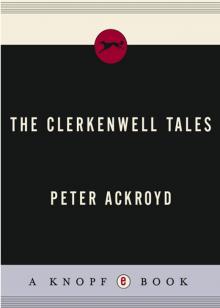 The Clerkenwell Tales
The Clerkenwell Tales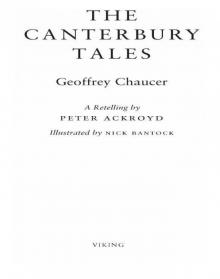 The Canterbury Tales
The Canterbury Tales J. M. W. Turner
J. M. W. Turner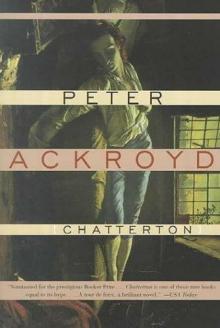 Chatterton
Chatterton The Canterbury Tales – A Retelling
The Canterbury Tales – A Retelling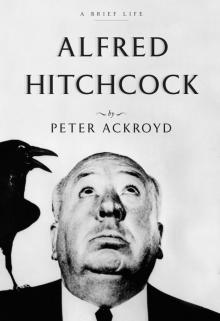 Alfred Hitchcock
Alfred Hitchcock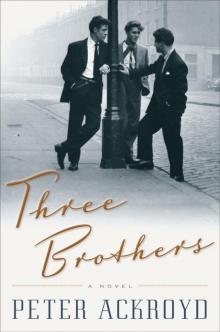 Three Brothers
Three Brothers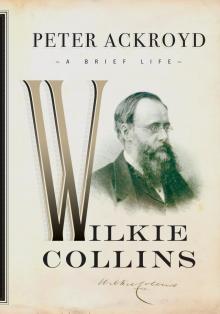 Wilkie Collins
Wilkie Collins Venice
Venice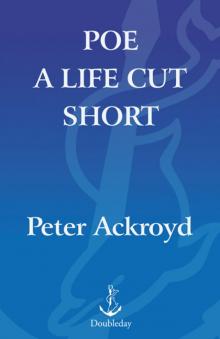 Poe
Poe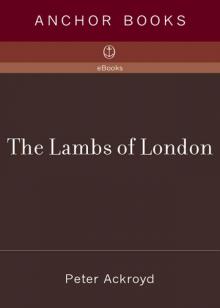 The Lambs of London
The Lambs of London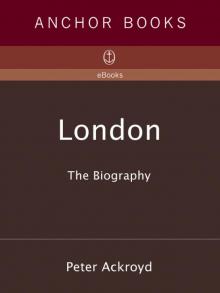 London
London Queer City
Queer City Revolution, a History of England, Volume 4
Revolution, a History of England, Volume 4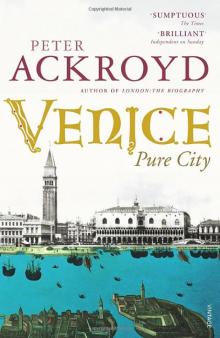 Venice: Pure City
Venice: Pure City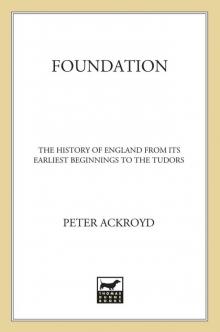 Foundation
Foundation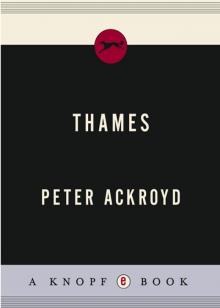 Thames
Thames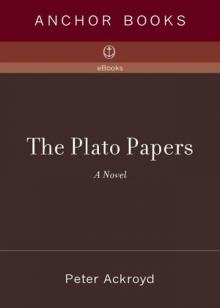 The Plato Papers
The Plato Papers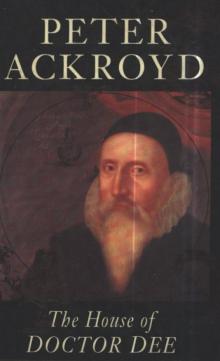 The house of Doctor Dee
The house of Doctor Dee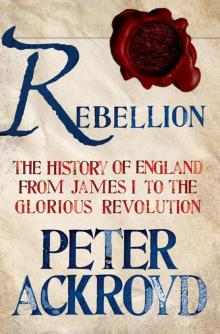 Rebellion: The History of England from James I to the Glorious Revolution
Rebellion: The History of England from James I to the Glorious Revolution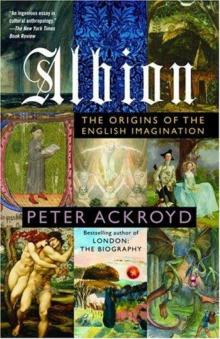 Albion: The Origins of the English Imagination
Albion: The Origins of the English Imagination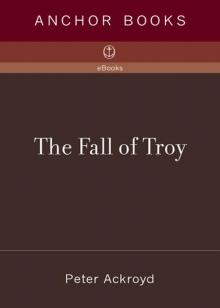 The Fall of Troy
The Fall of Troy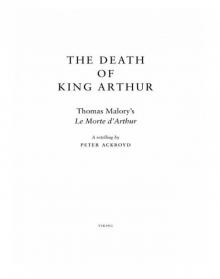 The Death of King Arthur
The Death of King Arthur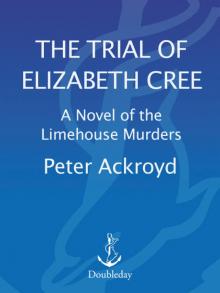 The Trial of Elizabeth Cree
The Trial of Elizabeth Cree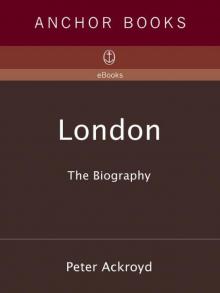 London: The Biography
London: The Biography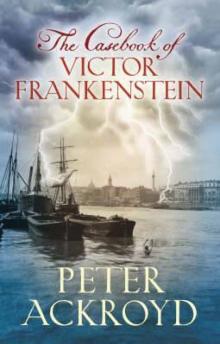 The Casebook of Victor Frankenstein
The Casebook of Victor Frankenstein Hawksmoor
Hawksmoor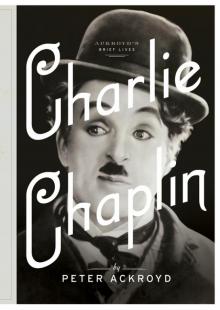 Charlie Chaplin
Charlie Chaplin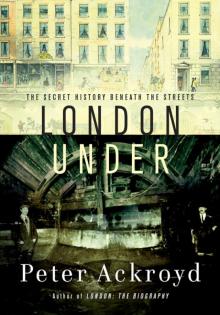 London Under
London Under